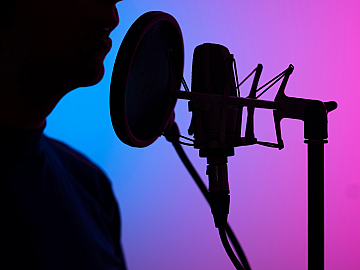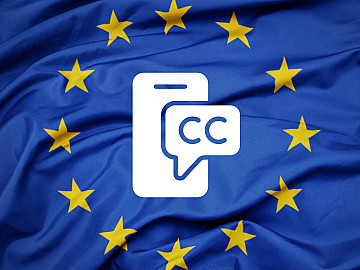One of the most common descriptive words to show up in a voice-over casting brief is the word friendly.
While this may sound simple enough at first glance, “friendly” can be a tough nut to crack if the voice actor is new to the industry or their voice isn’t typically cast in these roles. The genericness of the direction makes it even harder to follow in practical terms. Indeed anyone can sound friendly to their friends?
It's time to get more specific.
Two types of friendly

No, not these two…
Before we get too far along, there’s a fork in the road I want to point out. There are two types of friendly to address:
-
Characters that are friendly by nature
-
Copy that should be read in a friendly manner
A voice actor creating the voice of a friendly character will require a complete understanding of the character’s motivations, relationships with other characters and the objectives for the scene or episode. For example, they may be a generally friendly (good) character but angry at the person they’re speaking to in a particular scene or upset with the situation at hand.
For the voice actor to convey this, it will require more nuance and attention than a general “friendly tone”. An experienced director will make this clear in both the scene notes and when directing the performance.
Copy that should be read in a friendly way; it can often be a bit more straightforward. Most voice actors will master the friendly commercial read at some point because, without a friendly sounding voice in their repertoire, it is challenging to attain commercial success!
On Voquent, we don't have a 'friendly' tone category because any commercial voice-over will, by its nature, sound friendly! It's a much better practice to decide what specific feelings you want to incite in the target audience. Then choose an appropriate tone for your voice-over brief, e.g. Comedic, Conversational, Eloquent, Enticing, Nurturing, Playful or Inspiring.
The descriptor 'friendly voice' is not always that useful, mainly if the copy itself isn't written in a suitably 'friendly' way. The script is just as important as the voice, after all!
ALSO READ: What Makes a Voice Scary?
Sound more friendly with these 3 tips
For additional help nailing various 'friendly' sounding reads, try a few of the ideas below next time you’re behind the mic or directing a voice actor. You’ll be surprised at the differences that shine through in the vocal performance:
1.Smile and raise your eyebrows

It’s hard to sound anything but friendly with raised eyebrows and a smile. This simple trick is sure to bring happiness to even the dullest copy and bring joy and 'friendliness' right into the microphone and out of the speakers to elicit feelings of excitement and optimism in the listener.
Not only is it an easy trick to perform, it genuinely works according to this scientific study.
2.Imagine your audience

The voice actor could imagine they are speaking to a close friend while recording. This isn’t a faceless, nameless audience, but someone you know really well. How do you want them to feel?
If it’s a longer book or narration, you may even suggest they put up a small picture of someone in the booth to help them remember the audience throughout the project. If you do this, though, you may want to check with the friend that they don’t mind being a virtual studio buddy!
3.Always use gestures

Voice-over is acting; it's not just about putting the vocal cords to work. Get your whole body involved. If the studio space allows, and as characterisation dictates, encourage the voice actor to use hand gestures instead of standing still. This can help them feel more like the character, and their voice will sound audibly more animated and excited about the product, service or whatever they are narrating.
Character alignments can help too.
 >>
>>
Character alignments, first popularised by Dungeons & Dragons, are helpful guidance in a voice acting brief. Much more useful in fact than the adjective 'friendly'. If you're not familiar with character alignments and how they relate to voice-over, we have a great post explaining it in detail.
Using character alignments, it is possible to categorise and differentiate “good” characters easily. This opens up your options for voices both in character situations and for commercial reads. Of course, ultimately, your interpretation of a character will come down to the script and any additional direction notes provided. Still, the alignment can instruct the performance and define different friendly-sounding personalities.
This is something that not only the voice actor must consider (of course!), but the director and the copywriter too. Remember the 'two types of friendly' we mentioned before?
Well, even a corporate script will be read by a particular sort of 'character' and thinking about whether they are Lawful Good (or perhaps 'strait-laced', 'authoritative') or Chaotic Good (friendly but 'cheeky', perhaps a bit more 'playful') can make a world of difference. The character must be considered throughout the process.
RELATED: How to Discover the Perfect Voice for Any Character Role
Character alignments can help shape vocal choices so that characters and commercial reads are more nuanced. This can help create a more honest and genuine sounding read, giving you different 'friendly voices'.
The most experienced voice-over talents will already have various friendly-sounding characters and commercial voice demos on their Voquent profile. If you come across a demo you like, click the picture on the Demo to visit their profile to listen to more Demos and Reels.
They may already have recorded the perfect vocal sound for your project or character, and you can use this demo as a solid reference in your brief when you contact us to check availability.
Listen to Friendly Voices Now
Sometimes we include links to online retail stores such as Amazon. As an Amazon Associate, if you click on a link and make a
purchase, we may receive a small commission at no additional cost to you.


















